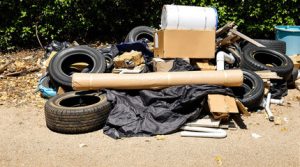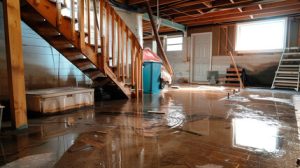Rubbish removal and demolition are now fields of innovation and responsibility. The days of treating them as simple clearing jobs are over. Modern practices combine efficiency, environmental awareness, and creative reuse. This shift is changing how cities and communities approach waste and structural removal.

The trend toward deconstruction over destruction is gaining momentum. Instead of tearing buildings down in one sweep, teams dismantle them carefully to salvage valuable materials. Timber, bricks, glass, and steel can be processed for reuse in other projects. This saves resources and reduces the strain on landfills. Visit Website to learn more.
Sustainability is at the heart of new rubbish removal methods. Items collected are sorted into categories for recycling, upcycling, or safe disposal. Hazardous waste is given special treatment to prevent harm to soil, water, and air. This method turns rubbish into an opportunity instead of a burden.
Technology is making demolition smarter and safer. Drones are used to assess sites from above, creating accurate maps and identifying risks. Remote-controlled machinery can handle tasks in hazardous areas where human presence is unsafe. These innovations protect workers while maintaining precision.
Selective demolition has become a preferred choice for certain projects. This approach focuses on removing specific parts of a structure without disturbing the rest. It is useful in renovations or when preserving historical elements is important. The process also allows for more effective material recovery.
Community-based rubbish removal projects are creating social impact. People work together to clear spaces, donate usable items, and recycle materials. This builds stronger local networks while reducing the environmental cost of waste. It also encourages residents to take pride in their surroundings.
Waste from demolition is increasingly viewed as a resource. Materials like concrete can be crushed and reused in road construction. Metal can be melted and reformed for new applications. This reduces the demand for raw materials and supports circular economy principles.
Safety is now a central focus in demolition projects. Advanced dust suppression systems prevent harmful particles from spreading. Real-time air quality monitoring ensures workers and nearby residents are protected. These measures align with modern health and environmental standards.
Urban rubbish removal presents unique challenges that require creative solutions. Limited space, heavy traffic, and noise restrictions call for innovative equipment and scheduling. Compact waste collection units and low-emission vehicles are making these operations more practical. This ensures that efficiency and compliance go hand in hand.
Hazardous materials in demolition sites require specialized expertise. Substances like asbestos, lead, and chemical residues must be carefully removed and contained. Proper disposal prevents contamination and protects ecosystems. This aspect of the work demands strict adherence to safety protocols.
Education is shaping the future of these industries. Workers receive training in safe handling, sustainable practices, and the use of modern tools. Clients are also becoming more aware of the benefits of eco-friendly demolition and rubbish removal. Knowledge is proving to be as valuable as equipment.
Upcycling has emerged as a creative extension of rubbish removal. Old beams can be turned into furniture, while salvaged tiles find new life in decorative designs. Artists and craftsmen are turning discarded materials into unique products. This adds economic and cultural value to what would otherwise be waste.
Robotics is playing a growing role in demolition. Machines can now operate in environments that are too dangerous for humans. They can cut, break, and lift materials with precision. This combination of safety and efficiency is shaping the future of complex projects.
Seasonal rubbish collection drives are helping communities manage waste better. These events encourage households and businesses to clear out unwanted items in an organized way. Collected goods are sorted for recycling or donation. This keeps public spaces cleaner and reduces illegal dumping.
Environmental assessments are becoming standard before any demolition work begins. Experts study the site to identify potential hazards and opportunities for material recovery. The findings influence the methods, tools, and timelines used in the project. This proactive planning leads to better results.
Mobile sorting stations are changing how rubbish is processed on-site. Materials are separated immediately into different categories, preventing contamination. This speeds up recycling and reduces the number of trips needed for disposal. It also keeps valuable resources from being lost in general waste.
Some projects now fund themselves partially through material recovery. Salvaged items are sold to cover part of the operational costs. This model encourages more efficient collection and reuse. It also reduces the financial burden on clients.
Post-demolition rehabilitation is an important final step. Sites are cleaned, leveled, and prepared for their next use. In some cases, green spaces or public facilities replace the demolished structures. This enhances the community while restoring environmental balance.
Digital transparency is increasing trust between service providers and clients. Detailed reports show where materials end up after collection. These records prove compliance with sustainability goals. They also help clients make informed decisions in future projects.
Innovative demolition methods like hydrodemolition are gaining attention. Using high-pressure water to remove concrete allows surrounding materials to remain intact. This technique reduces noise, dust, and structural damage. It is particularly useful in sensitive locations.
Partnerships between demolition teams and creative sectors are producing unexpected results. Film sets, art projects, and community installations are built from reclaimed materials. This reduces waste while preserving architectural history in a new form. It also inspires fresh approaches to resource use.
Renewable energy is making its way into rubbish removal operations. Solar-powered compactors and electric demolition tools cut down on emissions. These tools align with wider climate-conscious initiatives. They also appeal to clients who value green solutions.
In disaster recovery situations, rubbish removal and demolition become urgent services. Clearing debris quickly helps restore safety and allows rebuilding to begin. Skilled teams can also salvage materials even in chaotic environments. This speeds recovery while minimizing waste.
Specialized reuse centers are emerging as partners in the industry. They provide a marketplace for items saved from demolition sites. Builders, designers, and homeowners can find unique and affordable resources there. This keeps materials in circulation and reduces environmental strain.
Artificial intelligence is helping plan demolition work more efficiently. Algorithms can suggest the safest and most sustainable dismantling sequence. This reduces unnecessary damage and increases material recovery. The technology continues to expand the industry’s capabilities.
The future of rubbish removal and demolition will be shaped by innovation and collaboration. As awareness of environmental impact grows, the demand for sustainable solutions will rise. Those who adapt will lead the way toward cleaner, safer, and more resource-conscious practices. The evolution is well underway and promises lasting benefits.


